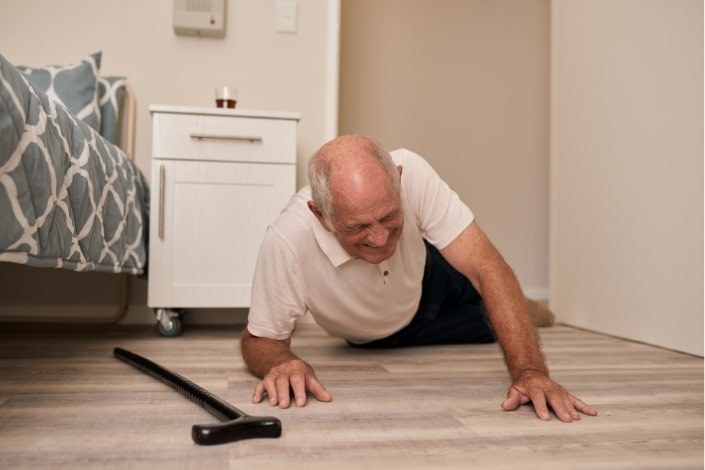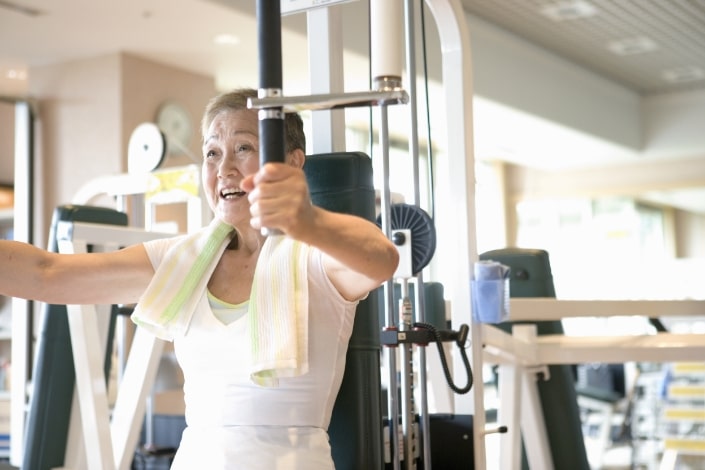
5 facts about...Physical activity and cardiovascular disease

Five discussion points about the role of exercise in preventing and managing cardiovascular disease at all ages are presented here by Dr Brea Kunstler, Professor Lucy Lewis, Ingrid Lin, Ty Ferguson and Associate Professor Nicole Freene.
1. Physical activity is beneficial with or without cardiovascular disease
Physical activity confers significant health benefits.
The World Health Organization’s evidence-based public health guidelines for physical activity and sedentary behaviour included recommendations for adults living with chronic conditions for the first time in 2020.
Adults with chronic conditions should aim for at least 150 to 300 minutes of moderate intensity aerobic activity (or 75 to 150 minutes of vigorous activity or an equivalent combination), muscle strengthening at least two days per week and a multicomponent activity emphasising functional balance and strength at least three times per week.

Prolonged sedentary periods should be avoided. Regular physical activity plays an important role in the management and prevention of heart disease and the benefits far outweigh the risks (Reid et al 2022).
People with chronic conditions should engage in physical activity according to their abilities (Tian & Meng 2019).
Well-informed conversations with health professionals can build confidence and reassure people who are fearful about their condition deteriorating.
While medical clearance for physical activity may be required for people with new or worsening symptoms or for vigorous physical activity (Pelliccia et al 2020), it is generally unnecessary for light to moderate activity (Bull et al 2020).
2. Older adults with heart disease are more prone to falling
Falls are common in older adults, particularly those with cardiovascular disease (CVD) (Jansen et al 2016, Cronin & Kenny 2010, Aburub et al 2023).
In general, about one-third of older adults will experience a fall each year.
The presence of a chronic condition such as CVD increases that risk (Mikos et al 2021, Lee et al 2020).
One study found that 60 per cent of adults hospitalised with CVD have a moderate to high falls risk (Denfeld et al 2022).

Certain populations with CVD will experience more falls—for example, the falls risk in people with stroke is double that of healthy older adults (Dean et al 2021).
Various risk factors contribute to the link between CVD and falls in older adults.
Those directly related to CVD include hypotension, reduced cardiac output, syncope and arrhythmias (Denfeld et al 2022, Jansen et al 2016, Lee et al 2016, Tan & Kenny 2006).
Risk factors related to ageing include visual or cognitive impairment and gait and balance problems (Denfeld et al 2022).
Interventions to reduce the risk of falls include assessing gait and balance, prescribing exercise programs that target strength and balance (with appropriate monitoring), providing assistive devices, facilitating cardiac rehabilitation and addressing falls hazards (Mikos et al 2021, Denfeld et al 2022, Sherrington et al 2019).
3. Resistance training assists recovery after cardiac surgery or a cardiac event
Resistance training increases muscle strength and endurance, functional capacity and quality of life and decreases the risk of mortality in people with and without heart disease (Williams et al 2007). Increases in muscle mass may also reduce multiple risk factors for CVD, such as diabetes, blood pressure and weight management (Williams et al 2007), and improve cognitive function following cardiac surgery (Pengelly et al 2022).
When compared to aerobic training in people with coronary heart disease, resistance training alone results in similar increases in muscle strength and aerobic fitness (Hollings et al 2017).

Together, resistance and aerobic training further increase both aerobic fitness and strength.
Resistance training should therefore be included in cardiac rehabilitation exercise programs (Woodruffe et al 2015).
Recommended for all adults with heart disease, exercise- based cardiac rehabilitation reduces cardiovascular mortality, hospitalisations and recurrent cardiac events (O’Dibben et al 2023).
Very few adverse events have been reported and resistance exercise appears to be well tolerated (Williams et al 2007, Hollings et al 2017).
While underlying musculoskeletal conditions should be considered (Hollings et al 2017) and special consideration given to recent median sternotomies, early, active participation in upper limb tasks is supported by evidence (within safe limits of pain) (El-Ansary et al 2019).
4. An active lifestyle has lifelong benefits for children with congenital heart disease
Congenital heart disease (CHD) affects roughly one per cent of newborns worldwide. Advances in CHD management over recent decades mean that most children with CHD are now expected to live into adulthood and, as adults, are at higher risk of CVD when compared to their peers.

Current management is shifting towards long-term physical development and the establishment of healthy practices (van Deutekom & Lewandowski 2021).
A physically active lifestyle is widely recommended for managing CHD at all life stages (Caterini et al 2020) and evidence suggests that active lifestyles established in adolescence typically persist into adulthood (Amir et al 2022).
Like all children, those with CHD should be aiming for 60 minutes of moderate to vigorous physical activity each day.
While specific restrictions do exist, such as no contact sports for those with pacemakers or those using anticoagulants, current evidence doesn’t support the restriction of physical activity.
There is no one-size-fits-all approach to managing the various types of CHD but the focus of physiotherapy interventions should be on strengths-based messaging to clients, collaboration with physicians and the leveraging of technology and wearables such as activity trackers for monitoring of real-time exertion, providing external feedback and enhancing exercise adherence (Amir et al 2022).
5. Brief counselling can increase physical activity levels
The National Heart Foundation of Australia suggests that brief counselling can increase physical activity levels in people with CVD (Briffa et al 2006).
Five brief counselling sessions (100–200 minutes in total) over one year increased daily physical activity in 851 Japanese adults without CVD and these results were maintained for one year (Tripette et al 2021).
However, those with CVD might need more comprehensive and tailored support.
Recent research shows that patients may have specific, additional barriers to physical activity depending on their presenting condition (Kanavaki et al 2017, Klompstra et al 2021).
Any approach to increasing patient physical activity levels therefore needs to be matched to the individual (Woodruffe et al 2015).

A telephone intervention involving people with CVD measured physical activity using a pedometer and included four telephone coaching sessions (lasting seven to 20 minutes each) tailored to helping them achieve their physical activity goal.
The intervention increased physical activity levels but required individual tailoring, subsequently increasing its complexity (Sangster et al 2017).
It’s worth noting that if physiotherapists don’t have the capacity to deliver complex interventions, something is always better than nothing when it comes to physical activity for heart disease (Piepoli et al 2016).
>> Dr Brea Kunstler APAM MACP is a behaviour change scientist at BehaviourWorks Australia, an APA Research Physiotherapist and a co-convenor of the APA advisory group Physiotherapists for Physical Activity. She has a PhD in physical activity behaviour change and provides online coaching services.
>> Professor Lucy Lewis APAM is the deputy director of the Caring Futures Institute at Flinders University, with a focus on building research capacity and transforming the workforce. Lucy’s research involves promoting physical activity throughout life and co-designing opportunities for intergenerational healthy lifestyle behaviours.
>> Ingrid Lin is a PhD candidate at Macquarie University and works as a physiotherapist and research assistant. Her research interests include physical activity and health promotion
by physiotherapists, particularly for older adults and those with chronic health conditions.
>> Ty Ferguson is a research associate at the University of South Australia and a clinician and clinical educator in paediatric physiotherapy. He has recently completed a PhD in public health (awaiting conferral), exploring the annual rhythms in physical activity, sedentary behaviour and sleep of Australian adults.
>> Associate Professor Nicole Freene is a clinical physiotherapist, an academic at the University of Canberra and co-chair of the Asia-Pacific Society for Physical Activity’s special interest group Physical Activity in Healthcare. Her research focuses on increasing physical activity levels and decreasing sedentary behaviour in adults.
© Copyright 2024 by Australian Physiotherapy Association. All rights reserved.





